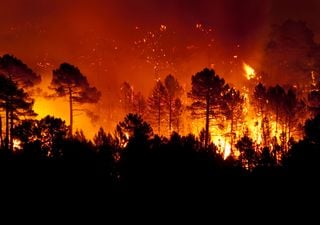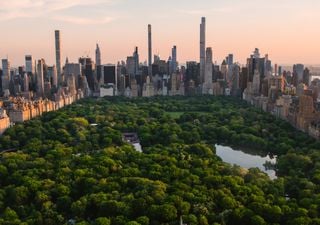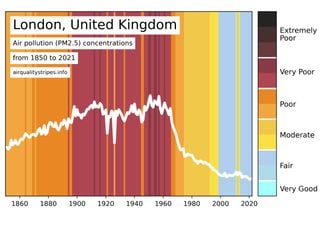Scientists say a new way of visualizing air quality has been created to force governments to act
There are huge inequalities in air quality across the world, with the situation worsening in many countries and governments failing to take concrete measures to improve the situation.

It is important that information about air quality reaches policymakers in a way that is easy to interpret and that encourages governments to take urgent action.
New visualization of air quality over the years
According to The Guardian newspaper, a team of scientists has created a new way of visualizing the contrasts in air pollution that we breathe around the world. The results reveal huge inequalities in air quality, with the situation worsening in many places.
The project was inspired by Ed Hawkins' climate stripes, which aims to demonstrate the rise in temperature in a place, over the years, through coloured stripes, from blue, colder, to red, hotter.
The new air quality stripes show air pollution from 1850 to the present. Each year has a separate vertical bar, coloured according to the amount of pollution particles that exist in a given location.
Complying with the guidelines of the World Health Organization, WHO, clean air is coded as sky blue; yellow, brown and black tones represent the highest pollution, in a colour scheme that reflects the evolution of air quality over the years in a location, since 1850.
Particle air pollution in some cities
To visualise air quality, measurements of PM2.5 particles were used, which are suspended particles with a diameter of less than 2.5 microns. These particles can penetrate the respiratory system up to the alveolar level, interfering with the respiratory process and posing a serious risk to health.
As a result of the project, there are examples of the evolution of air quality for four cities that clearly convey the urgent need for action by all governments.
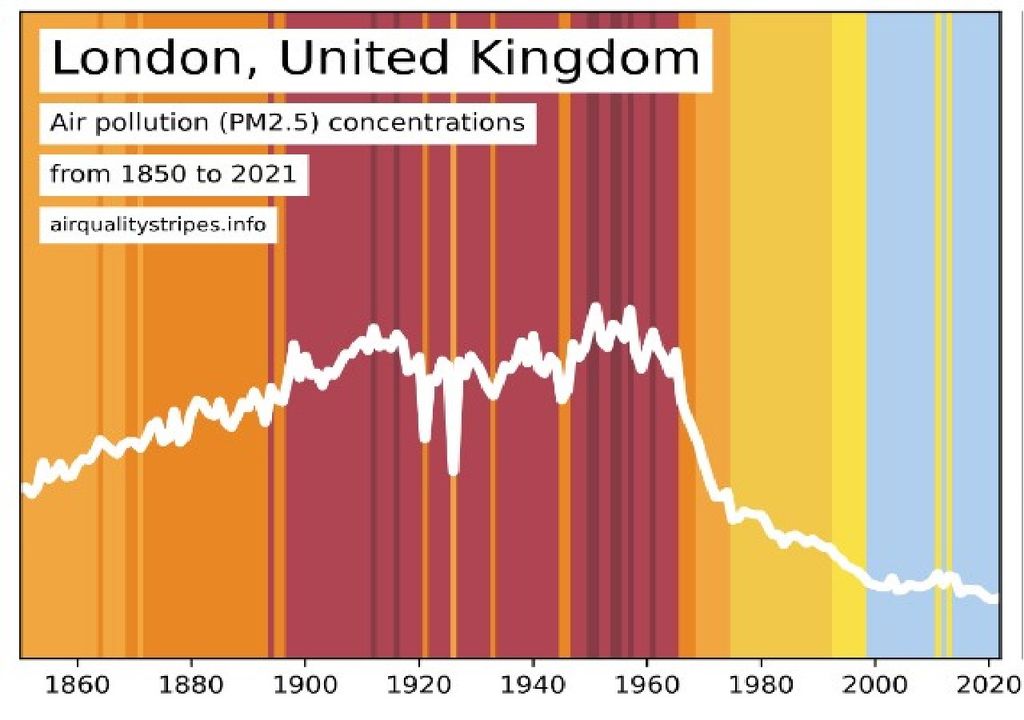
For more than a century, London was affected by coal-induced smogs. A reluctant government was finally forced to act when 12,000 people died in a week-long smog in 1952. Clean air laws followed. The use of coal was replaced by heating oil and then fossil gas.

An improvement in air quality also occurred in Beijing. The deterioration of the air in this city went virtually unnoticed until the eyes of the world turned to the city for the 2008 Olympic Games. By then, deaths caused by air pollution in China had reached more than 2 million per year, but a Recent industry and traffic cleanup has produced quick initial results.
However, the same did not happen in other cities, such as Islamabad and Jakarta. These two cities represent the trajectories of many developing nations with rapid urbanisation and industrial growth and no air pollution controls.
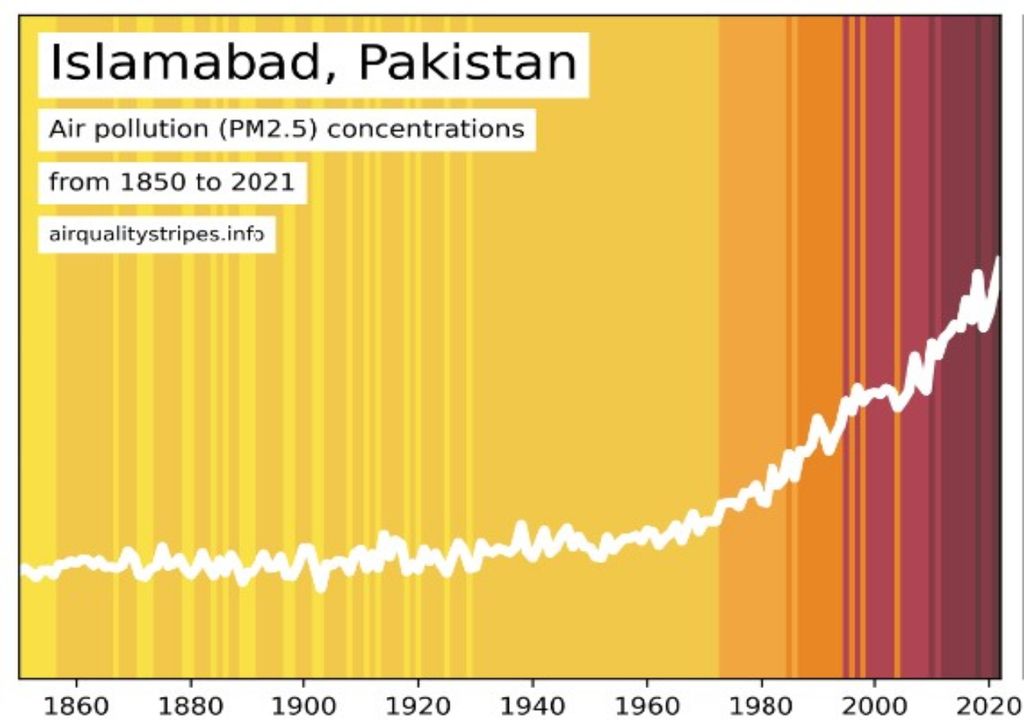
Data for the bands were obtained from the UK Met Office's global climate models, with adjustments from satellite observations that became available around 1998. This adjustment was also applied to past pollution, projected back to 1850, using statistics on fuels and energy.
Modelling global pollutant concentrations is a major challenge and models are continually evaluated and improved. Previous investigations have shown that CMIP6 multi-model simulations tend to underestimate PM2.5 concentrations when compared to global observations.
More than 99% of the world's population continues to breathe air that does not meet World Health Organisation guidelines. Even after improvements in Europe, particle pollution continues to cause more than 400,000 premature deaths per year; in the United Kingdom, this number is between 29,000 and 43,000.
Dr Kirsty Pringle, from the University of Edinburgh, who co-directed the project, said: “Air pollution is often referred to as the invisible killer, but these images make the invisible visible, showing changes over the decades.”





